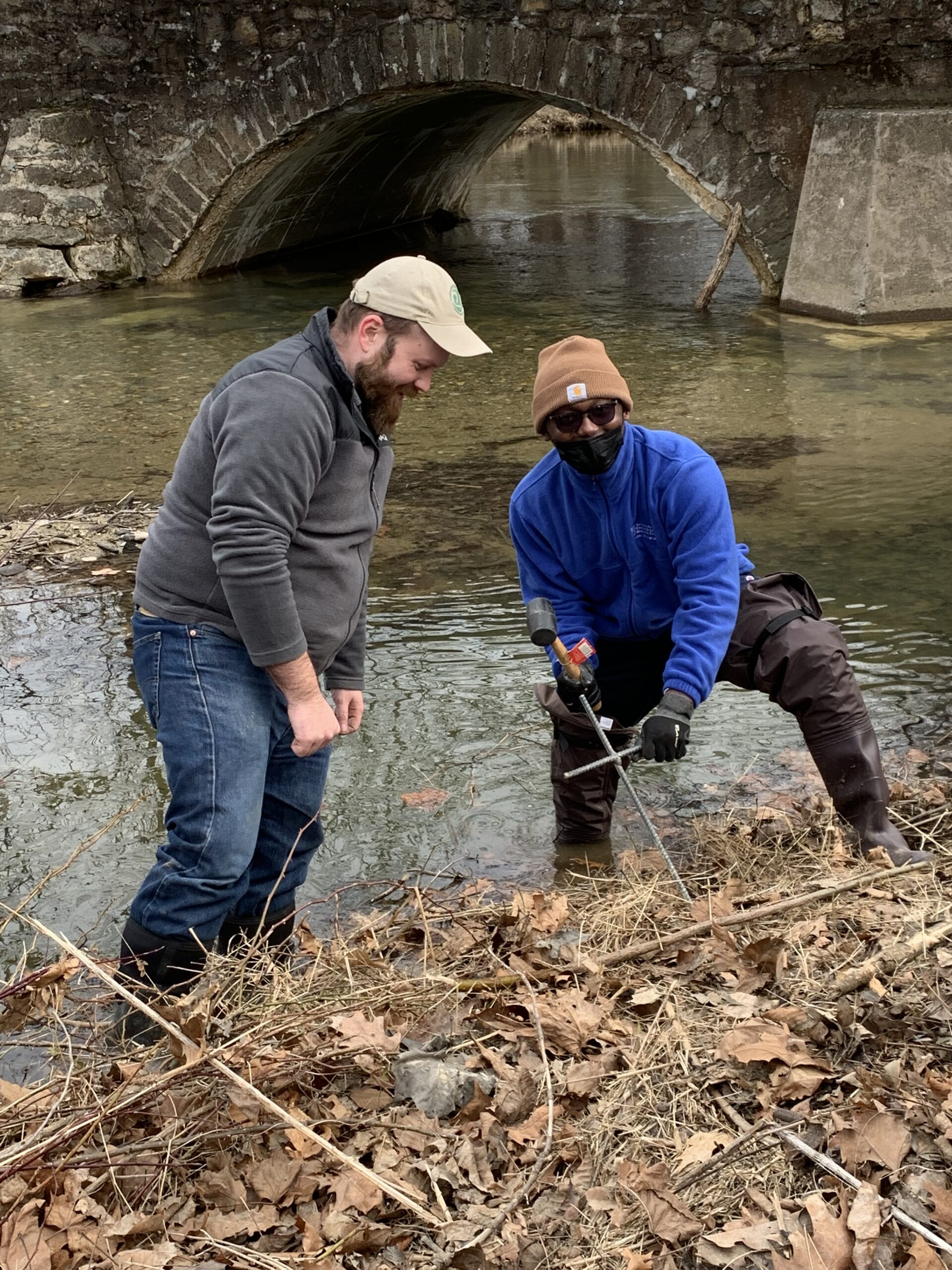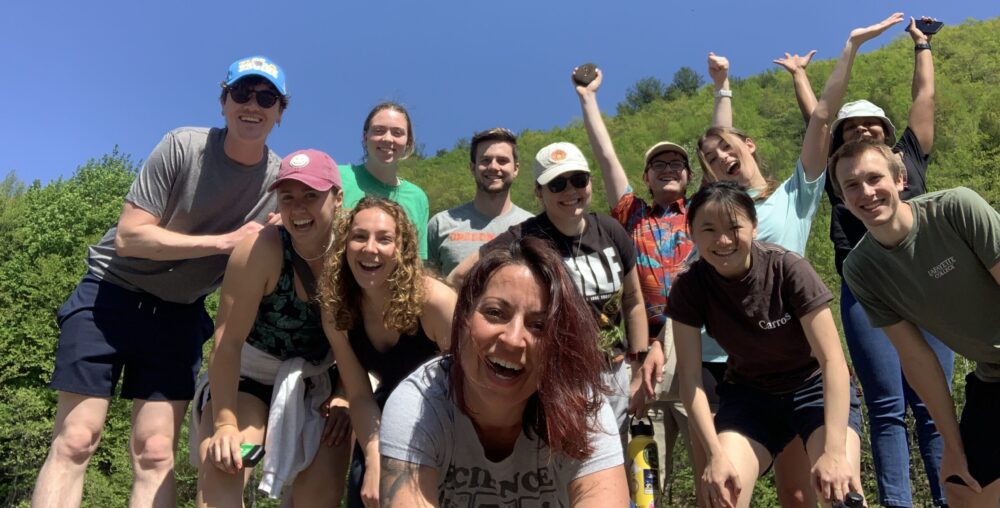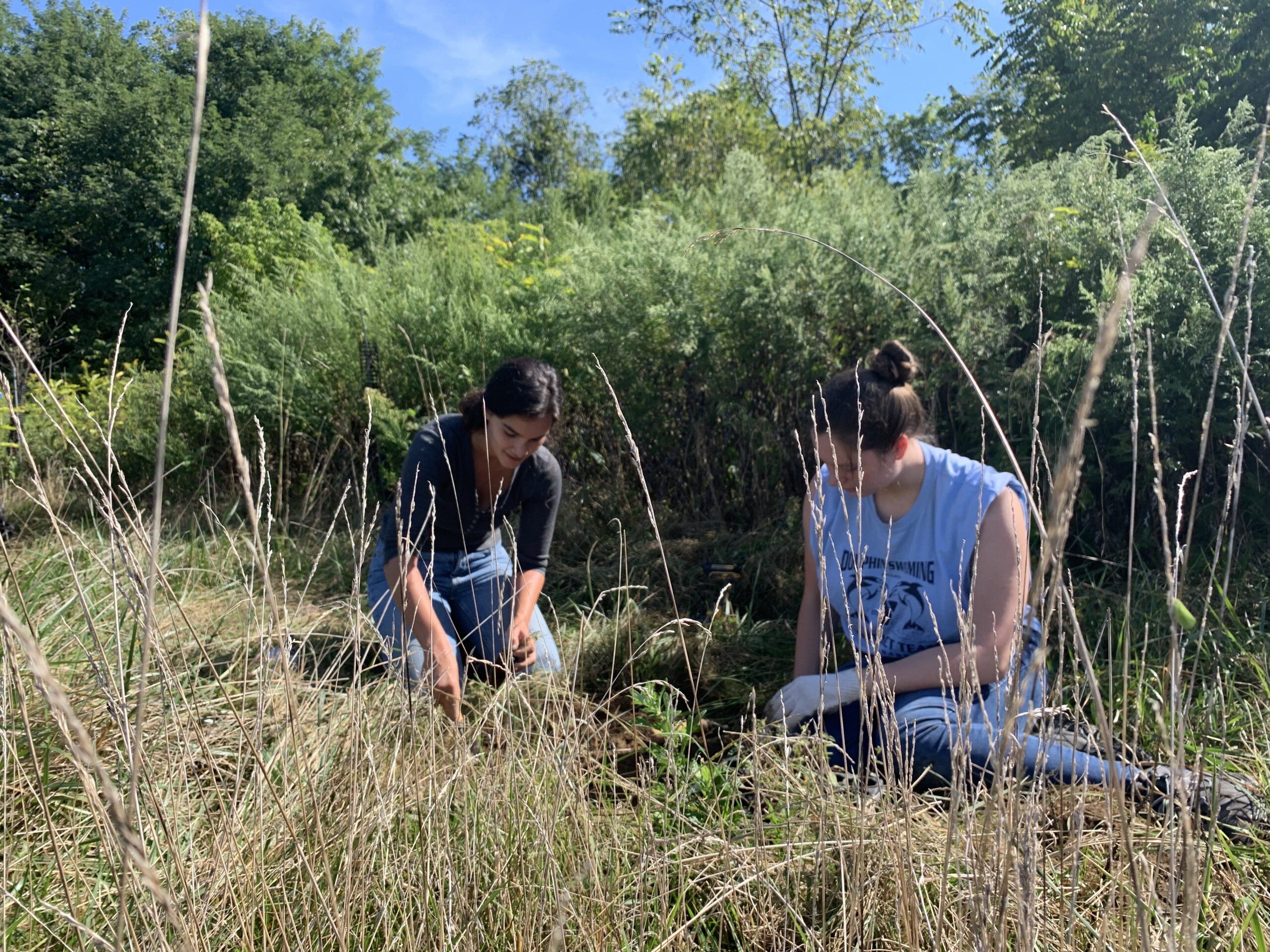RESTORATION ECOLOGY
Writing Course.
Prerequisites: you must have successfully completed Ecology (BIOL 231) or Conservation Biology (BIOL 272) or Earth Surface Processes (GEOL 300) or Environmental Geomorphology (GEOL 310) or Introduction to Environmental Engineering (CE 321) to enroll in this course.

Koby Acheampong ’22 works with Nate Pritchard, Watershed Specialist for the Northampton County conservation district, to replant shrubs in a riparian buffer at Misty Valley Farm to limit water quality degradation from runoff.
Counts as a required course for Environmental Science Majors in the Restoration Ecology track or as an elective for other Environmental Science Majors.
TOPICS AT A GLANCE
Principles, standards and steps of ecological restoration * ecological theory that underpins restoration science * the importance of volunteers and collaboration * power, policy and restoration * eco-cultural restoration
Description: Restoration Ecology is a relatively new – but rapidly growing – multidisciplinary field of applied study. It is an exciting time to be learning about the science of Restoration Ecology and engaging in the human practice of Ecological Restoration, which can be defined as the process of assisting the recovery of a degraded ecosystem. Because of the urgent need to combat climate change, reverse a mass extinction, alleviate poverty, and develop sustainably, the United Nations has declared 2021 – 2030 as the Decade for Ecosystem Restoration. This course is designed to give students an overview of the natural and human dimensions of ecological restoration. We will begin the semester with consideration of the recently revised international principles and standards for the practice of ecological restoration (see above; Gann et al. 2019). These Standards not only guide restoration practitioners but also highlight the role of ecological restoration in connecting social, community, economic, and sustainability goals. The remainder of the course will be structured around the human dimensions of ecological restoration: 1) participation, 2) power, and 3) perspective. This course is taught in one three-hour session per week that we use for a combination of lecture, project-based research, and restoration-based field trips.

